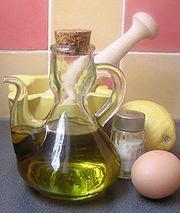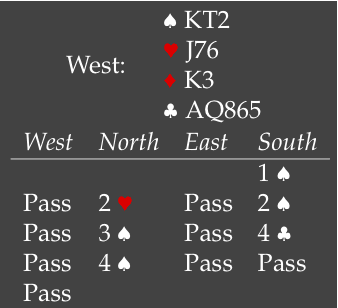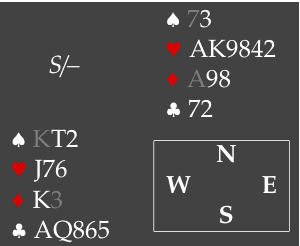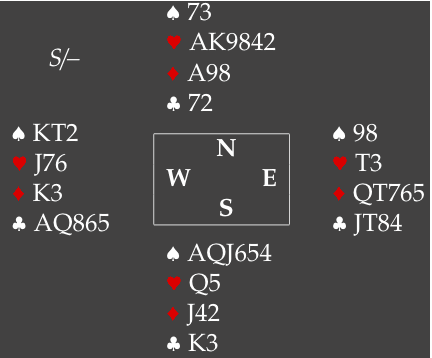 I was putting my groceries in the fridge earlier today when I noticed a few vegetables that had to eaten today. It was about lunchtime, so time to make a salad, as the nice thing about a salad is that it is healthy, quick to make and you can put in lots of things that you have lying around without having to worry about the exact quantities.
I was putting my groceries in the fridge earlier today when I noticed a few vegetables that had to eaten today. It was about lunchtime, so time to make a salad, as the nice thing about a salad is that it is healthy, quick to make and you can put in lots of things that you have lying around without having to worry about the exact quantities.
My first idea was to make a Waldorf salad, which is a mix of celery, apple, grapes and walnuts with a dressing. It didn’t quite work out that way, as the apples that I thought were in the fridge were in fact pears, and the box with nuts contained hazelnuts. So, I ended up with a combination of celery, pear, raisins and hazelnuts. For the dressing: mix a spoon of mayonnaise with a spoon of yoghurt, lemon juice, pepper and salt.
I’m not sure if this has ever been served before, if it hasn’t, I’m claiming the name “Stadler Salad” for it. After all, the Waldorf salad has been named after the famous New York hotel, Ritz salad has already been taken by John Cleese (aka Basil Fawlty) in the famous TV show Fawlty Towers, and the Stadler is a New York hotel too.
 It does help if you use home made mayonnaise. If you have never done this before: Take 3 fresh egg-yokes, a tablespoon of vinegar, a tablespoon of mustard. Make sure all ingredients are at room temperature. Put them in a blender, stir and then slowly add a little sunflower oil, continue stirring and add more oil until you have put in about 300 ml. Taste, add pepper, salt or lemon juice according to taste. This is much better than any of the stuff you’ll ever buy in a bottle and it is prepared in less time than it takes you to walk over to the store. Despite the fact that there are raw eggs in this, it stays well for several weeks if kept in the fridge. If you don’t trust fresh egg yokes, get some sterilized egg yokes at a specialized restaurant market like Hanos.
It does help if you use home made mayonnaise. If you have never done this before: Take 3 fresh egg-yokes, a tablespoon of vinegar, a tablespoon of mustard. Make sure all ingredients are at room temperature. Put them in a blender, stir and then slowly add a little sunflower oil, continue stirring and add more oil until you have put in about 300 ml. Taste, add pepper, salt or lemon juice according to taste. This is much better than any of the stuff you’ll ever buy in a bottle and it is prepared in less time than it takes you to walk over to the store. Despite the fact that there are raw eggs in this, it stays well for several weeks if kept in the fridge. If you don’t trust fresh egg yokes, get some sterilized egg yokes at a specialized restaurant market like Hanos.
A bridge salad can be made from a few bridge hands that are interesting but don’t have a particular theme. Here we go...
 First this one, from a team game at the club yesterday evening. You are on lead with this collection. The opponents are not a regular partnership, with few agreements. Your lead?
First this one, from a team game at the club yesterday evening. You are on lead with this collection. The opponents are not a regular partnership, with few agreements. Your lead?
A club lead doesn’t look that attractive, now that declarer likely has the ♣K. If declarer needs to set up hearts, he will attack the suit himself, so you don’t have to do that for him. A trump lead might work but can easily solve declarer’s problem in the suit. That leaves the diamond suit, even though the holding is quite unattractive for a lead. However, if you are going to defeat 4♠, your partner must have something in the suit. The ♦3 lead thus did not look completely unreasonable and you are not unhappy when this dummy appears.
 Declarer wins the ♦A, partner contributing the ♦5 (upside down count and attitude) and declarer the ♦4. Next, declarer plays the ♠7, ♠8, ♠J and you win your ♠K. Now what?
Declarer wins the ♦A, partner contributing the ♦5 (upside down count and attitude) and declarer the ♦4. Next, declarer plays the ♠7, ♠8, ♠J and you win your ♠K. Now what?
It still looks as if the only way to defeat the contract, is to take 2 club tricks. Unfortunately, there is no communication with partner. Your best shot appears to be to cash the ♦K and play a heart through, hoping that partner has an entry there. That isn’t the case, as the full hand was this.
 Well, you led the right suit, but unfortunately the wrong card. To be fully correct, declarer can always make the contract but on the ♦K lead, he has to duck the first trick, then win the second round of diamonds with the ace, blocking the suit, but this is not obvious. At the other table the ♦K was led, ducked, followed by a second diamond which declarer attempted to duck to his ♦J. Down 2. South has won a couple of Bermuda Bowls, so if he misses ducking the first diamond, it must be a hard play to find.
Well, you led the right suit, but unfortunately the wrong card. To be fully correct, declarer can always make the contract but on the ♦K lead, he has to duck the first trick, then win the second round of diamonds with the ace, blocking the suit, but this is not obvious. At the other table the ♦K was led, ducked, followed by a second diamond which declarer attempted to duck to his ♦J. Down 2. South has won a couple of Bermuda Bowls, so if he misses ducking the first diamond, it must be a hard play to find.
 Then, there is this hand which I managed to misplay earlier this week. Our auction was not particularly effective without doing anything seriously wrong: Polish Club, negative response, 1NT showing 18-20 balanced, Stayman and raised to 4♥. 3NT looks a lot easier to play with a 4♥-333 opposite 4♥-333. Our methods don’t allow us to figure that out though, in a more natural system you could try 1♣-1♥;2NT-3NT.
Then, there is this hand which I managed to misplay earlier this week. Our auction was not particularly effective without doing anything seriously wrong: Polish Club, negative response, 1NT showing 18-20 balanced, Stayman and raised to 4♥. 3NT looks a lot easier to play with a 4♥-333 opposite 4♥-333. Our methods don’t allow us to figure that out though, in a more natural system you could try 1♣-1♥;2NT-3NT.
Anyway, enough about the auction, you are in 4♥ and will have to play that. ♦Q lead, small, small and you win your ♦K. Plan the play.
For the lack of any better ideas, you start on the trumps, ♥2, ♥4, ♥A, ♥6 and ♥5, ♥9, ♥Q and ♥J. East is marked with the ♥K and ♦A, and you still have no idea what to do with the black suits. In order to postpone the decision, you lead a small diamond to east’s ace. East cashes the ♥K and continues with a small spade. I won the ♠A and played a third round of diamonds. West wins.
At first, this looked promising. West is forced to play a black suit, giving you a trick there. She returned a spade, small, small, jack. That leaves a guess for the club queen with ♣KTx opposite ♣AJx. Needless to say, I got that one wrong.
Did I play this correctly? No, of course not. I have to realize that with the ♠Q in west, the hand can never be made. When in with the ♦J, west will simply return a club, perhaps giving up a trick there, but ensuring a spade trick in the process. The proper line is, of course, to take the spade finesse, cash the remaining spades and only then concede a diamond. Now west is endplayed.
 As we started this blog with Waldorf and Stadler, I wonder what the famous duo would have said when kibitizing this play. Something like this perhaps?
As we started this blog with Waldorf and Stadler, I wonder what the famous duo would have said when kibitizing this play. Something like this perhaps?
- Waldorf: Hey Stadler, you fool, you slept through the entire hand!
- Stadler: Well, you kibitzed it trick by trick, now who is the fool?
Then again, maybe I don’t want to find out.
